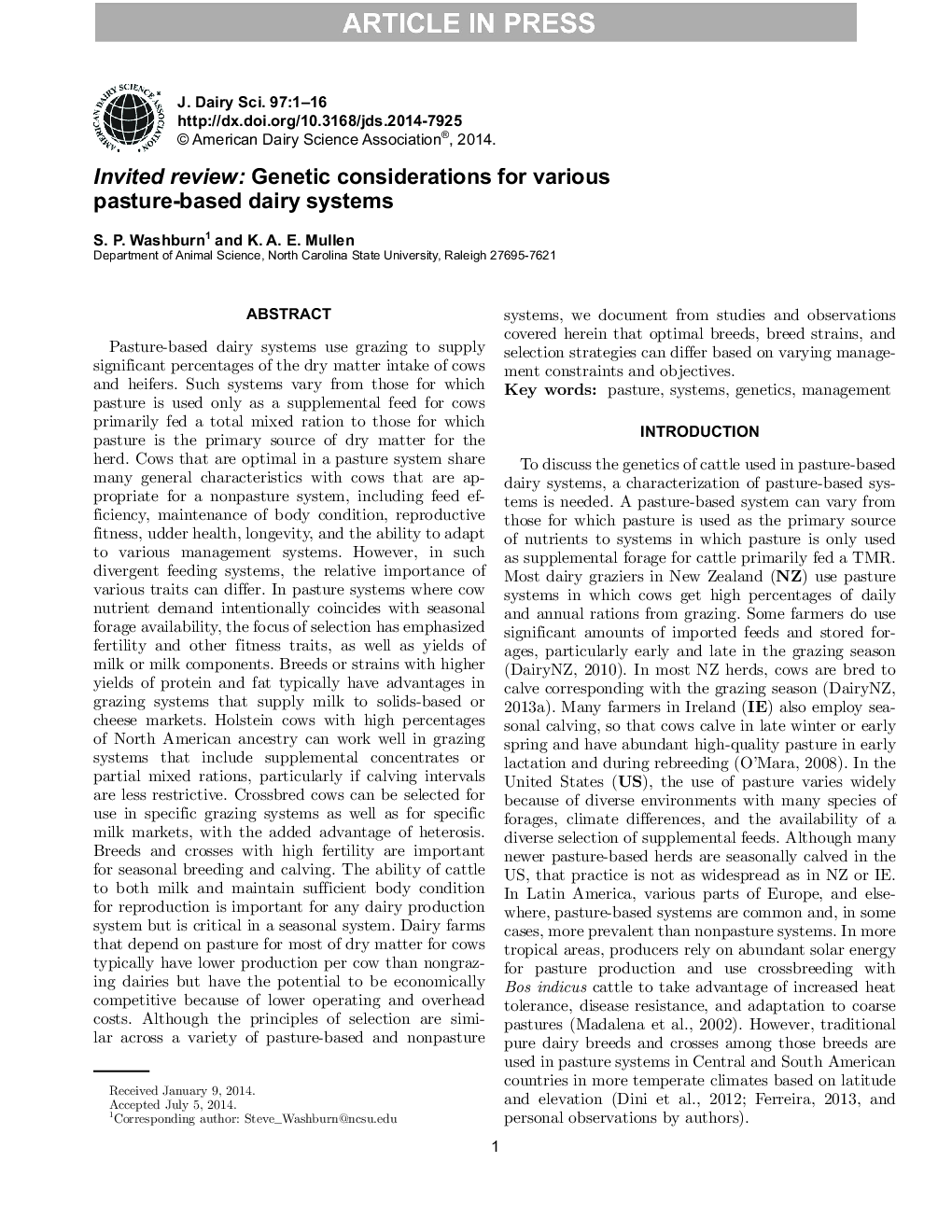| کد مقاله | کد نشریه | سال انتشار | مقاله انگلیسی | نسخه تمام متن |
|---|---|---|---|---|
| 10975978 | 1108038 | 2014 | 16 صفحه PDF | دانلود رایگان |
عنوان انگلیسی مقاله ISI
Invited review: Genetic considerations for various pasture-based dairy systems
ترجمه فارسی عنوان
بررسی دعوت شده: ملاحظات ژنتیکی برای سیستم های لبنی مختلف مبتنی بر مرتع
دانلود مقاله + سفارش ترجمه
دانلود مقاله ISI انگلیسی
رایگان برای ایرانیان
کلمات کلیدی
مرتع، سیستم های، ژنتیک، مدیریت،
موضوعات مرتبط
علوم زیستی و بیوفناوری
علوم کشاورزی و بیولوژیک
علوم دامی و جانورشناسی
چکیده انگلیسی
Pasture-based dairy systems use grazing to supply significant percentages of the dry matter intake of cows and heifers. Such systems vary from those for which pasture is used only as a supplemental feed for cows primarily fed a total mixed ration to those for which pasture is the primary source of dry matter for the herd. Cows that are optimal in a pasture system share many general characteristics with cows that are appropriate for a nonpasture system, including feed efficiency, maintenance of body condition, reproductive fitness, udder health, longevity, and the ability to adapt to various management systems. However, in such divergent feeding systems, the relative importance of various traits can differ. In pasture systems where cow nutrient demand intentionally coincides with seasonal forage availability, the focus of selection has emphasized fertility and other fitness traits, as well as yields of milk or milk components. Breeds or strains with higher yields of protein and fat typically have advantages in grazing systems that supply milk to solids-based or cheese markets. Holstein cows with high percentages of North American ancestry can work well in grazing systems that include supplemental concentrates or partial mixed rations, particularly if calving intervals are less restrictive. Crossbred cows can be selected for use in specific grazing systems as well as for specific milk markets, with the added advantage of heterosis. Breeds and crosses with high fertility are important for seasonal breeding and calving. The ability of cattle to both milk and maintain sufficient body condition for reproduction is important for any dairy production system but is critical in a seasonal system. Dairy farms that depend on pasture for most of dry matter for cows typically have lower production per cow than nongrazing dairies but have the potential to be economically competitive because of lower operating and overhead costs. Although the principles of selection are similar across a variety of pasture-based and nonpasture systems, we document from studies and observations covered herein that optimal breeds, breed strains, and selection strategies can differ based on varying management constraints and objectives.
ناشر
Database: Elsevier - ScienceDirect (ساینس دایرکت)
Journal: Journal of Dairy Science - Volume 97, Issue 10, October 2014, Pages 5923-5938
Journal: Journal of Dairy Science - Volume 97, Issue 10, October 2014, Pages 5923-5938
نویسندگان
S.P. Washburn, K.A.E. Mullen,
